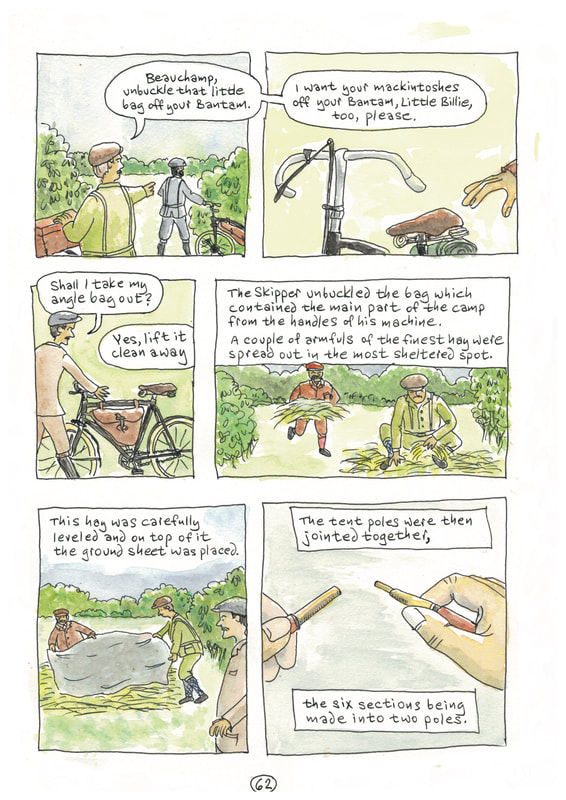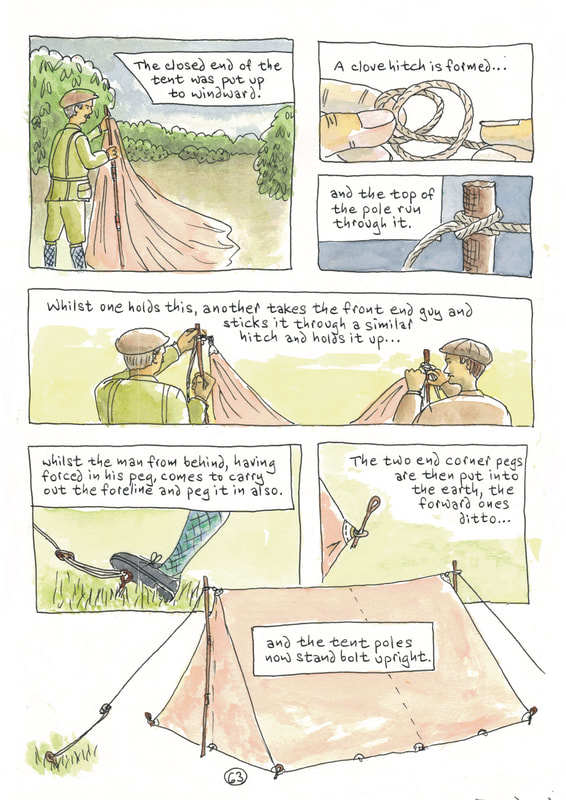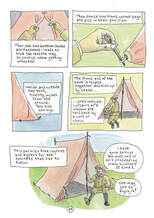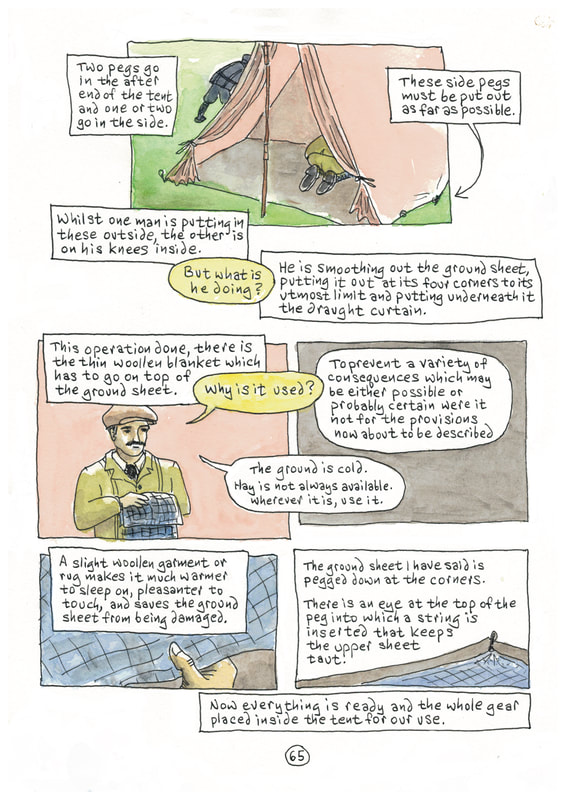But boy was I wrong. Figuring out exactly what was meant by the wording, looking at diagrams of the tent, and trying to show the process reasonably clearly has taken... far more days than I care to admit!
Here's are T.H. Holding's instructions from the book which I had to make sense of:
- "A couple of armfuls of the finest hay were spread out in the most sheltered spot. This hay was carefully leveled and on top of it the ground sheet was placed. The tent poles were then jointed together, the six sections being made into two poles. The closed end of the tent was put up to windward. A clove hitch is formed and the top of the pole run through it. Whilst one holds this, another takes the front end guy and sticks it through a similar hitch and holds it up whilst the man from behind, having forced in his peg, comes to carry out the foreline and peg it in also. The two end corner pegs are then put into the earth, the forward ones ditto, and the tent poles now stand bolt upright. Then the two bottom hooks are fastened - made to hook the reverse way to prevent them getting unhooked. Then these two front corner pegs are put in their position. Inside and outside the tent, twenty inches from the ground, are two strings. The front end of the tent is looped together and tied up by these precisely as curtains on a window are held back by a cord or chain. This permits free ingress and egress for the business that has to follow. Two pegs go in the after end of the tent and one or two go in the side. These side pegs must be put out as far as possible. Whilst one man is putting in these outside, the is on his knees inside. But what is he doing? He is smoothing out the ground sheet, putting it out at its four corners to its utmost limit and putting underneath it the draught curtain. This operation done, there is the thin woollen blanket which has to go on top of the ground sheet. Why is it used? To prevent a variety of consequences which many be either possible or probably certain were it not for the provisions now about to be described. The ground is cold. Hay is not always available. Where it is, use it. A slight woollen garment or rug makes it much warmer to sleep on, pleasanter to touch, and saves the ground sheet from being damaged. The ground sheet I have said is pegged down at the corners. There is an eye at the top of the peg into which a string is inserted that keeps the upper sheet taut. Now everything is ready and the whole gear placed insde the tent for our use."
And here's how these words have been incorporated to show this process, across four pages:
I think I've got this right in the end...




 RSS Feed
RSS Feed
